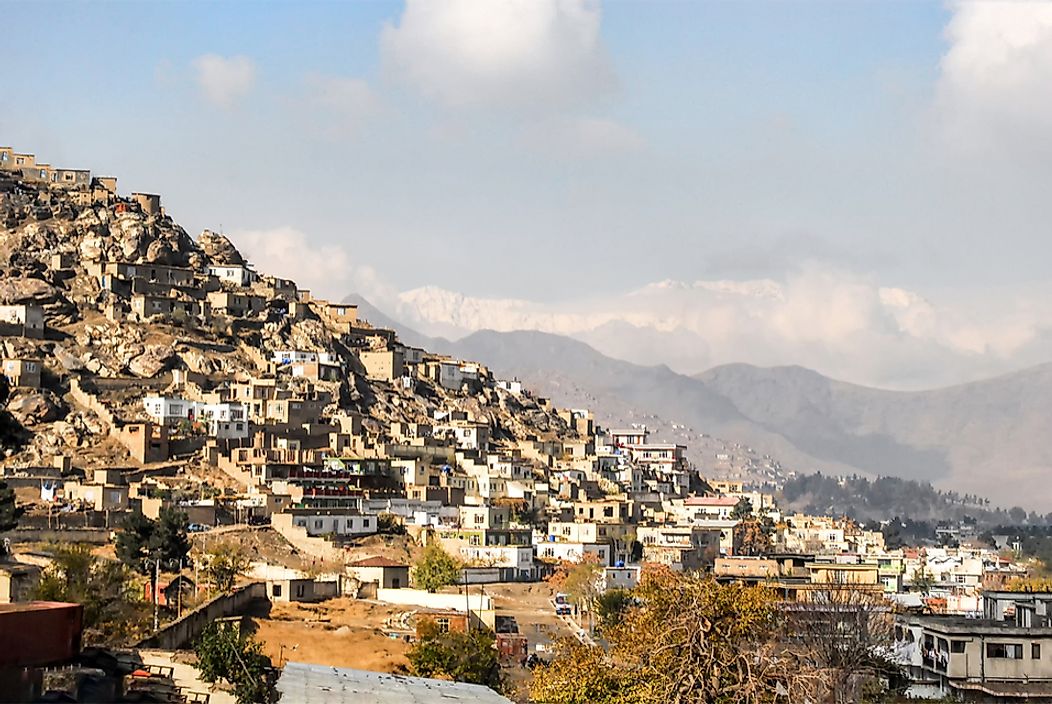Countries With the Lowest Life Expectancies in Asia

While many Asian nations are rapidly developing, poor healthcare facilities, malnutrition, lack of access to improved sanitation facilities, and other related issues still affect a significant segment of the population of these nations. As a result, besides Africa, Asian countries have some of the lowest life expectancies in the world. With burgeoning populations in countries like Pakistan and India, healthcare issues are further aggravated. Some Asian countries like Syria and Yemen, which have some of the lowest life expectancies, are also plagued by civil wars that result in adverse consequences on the health sectors of these nations. Some of the Asian countries with the lowest average life expectancies are highlighted below.
1. Afghanistan
Afghanistan has the lowest life expectancy among Asian countries. The average life expectancy of the Afghan population is only 60.5 years. The maternal mortality and infant mortality rates of Afghanistan are relatively high, at 396 deaths per 100,000 live births and 112.8 deaths per 1,000 live births, respectively. Rural areas are worse off, as they have little access to healthcare facilities. One in six children in such areas does not survive to the age of five. Poor sanitation, lack of clean water supply, a high prevalence of infectious diseases, and malnutrition are major challenges to healthy living in Afghanistan. Due to the lack of adequate health infrastructure in the country, many Afghans travel to neighboring countries to access better healthcare facilities. Years of war have degraded the country's healthcare system, and many healthcare professionals have left the country in search of safer and better opportunities abroad. However, due to the relatively peaceful environment in Afghanistan, the government is currently making substantial efforts to improve the country's healthcare system. Some improvements have already been achieved.
2. Syria
Life expectancy in Syria has drastically fallen since the onset of war in the country in 2011. Today, Syria has second lowest average life expectancy in Asia. The average life expectancy of Syrians is 64.5 years. Although life expectancy in the country improved significantly in the past few decades, the civil war has devastated the nation's health infrastructure. War has not only resulted in direct casualties in Syria, but also led to war-related deaths caused by a lack of proper medical care and respiratory illnesses. Cardiovascular diseases remain the most significant cause of death in the country. Experts believe the negative effects of war on the health of Syrians will take decades to heal. A lack of proper vaccination for children, as well as the lack of clean water and sanitation, will affect future generations of Syrians.
3. Yemen
Like Syria, Yemen is also suffering catastrophic consequences of war. Conflict in the nation has severely affected the healthcare system. It is reported that nearly 19 million of the 24.4 million young people in Yemeni are in need of humanitarian assistance. Famine and malnutrition are widespread in the nation, and drect casualties from war have further decreased the life expectancy of the Yemeni population. Healthcare facilities have been destroyed to a large extent, and the risky travel to healthcare centers restricts access to healthcare facilities when needed. The high rates of poverty, homelessness, and other consequences of war makes it difficult for the Yemenis to access healthcare facilities and medicine. As a result of these factors, Yemen has the third lowest life expectancy among Asian countries.
4. Laos
Laos has a average life expectancy of only 65.7 years. Healthcare facilities in the nation are poor. Vitamin and protein deficiencies are common among the nation's poor, and the country has a high rate of infant and child mortality. A large percentage of the population lacks access to adequate sanitation facilities and healthcare services.
5. Turkmenistan
The dissolution of the Soviet Union and the independence of Turkmenistan was followed by a period of turmoil in the nation. Decreased funding resulted in reduced access to proper healthcare facilities. For example, there were only 50 hospital beds for every 10,000 people in 2002. The country suffers from a shortage of well-trained medical professionals and modern health infrastructure. Cardiovascular diseases claim the highest number of lives in Turkmenistan, followed by cancer and respiratory diseases. The life expectancy in the country is 66.3 years.
6. Pakistan
Health infrastructure in Pakistan is adequate in urban areas of the country, but generally poor in rural areas. There is also a high disparity in the distribution of medical professionals in the urban and rural areas of the countries. Many well-educated doctors in Pakistan also migrate to developed nations in search of better opportunities, which results in a lack of skilled medical professionals in the country. The poor in urban areas and the rural population also suffer from a lack of access to improved sanitation facilities, clean water, and a balanced diet.
Countries With the Lowest Life Expectancies in Asia
| Rank | Country | Overall Life Expectancy | Female Life Expectancy | Male Life Expectancy |
|---|---|---|---|---|
| 1 | Afghanistan | 60.5 | 61.9 | 59.3 |
| 2 | Syria | 64.5 | 69.9 | 59.9 |
| 3 | Yemen | 65.7 | 67.2 | 64.3 |
| 4 | Laos | 65.7 | 67.2 | 64.1 |
| 5 | Turkmenistan | 66.3 | 70.5 | 62.2 |
| 6 | Pakistan | 66.4 | 67.5 | 65.5 |
| 7 | Myanmar | 66.6 | 68.5 | 64.6 |
| 8 | India | 68.3 | 69.9 | 66.9 |
| 9 | Philippines | 68.5 | 72.0 | 65.3 |
| 10 | Cambodia | 68.7 | 70.7 | 66.6 |







